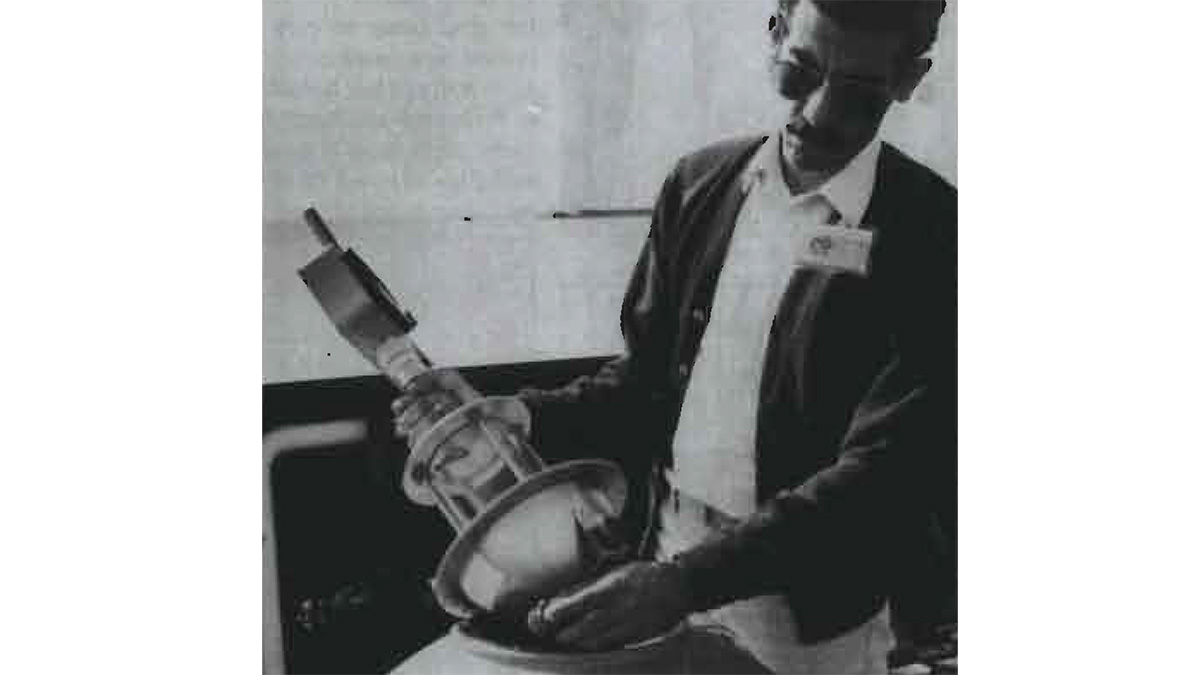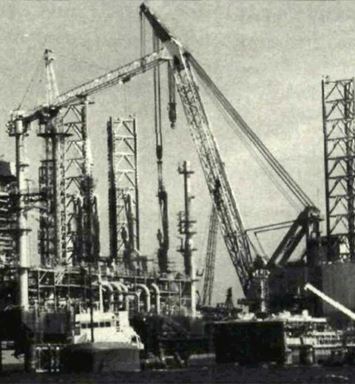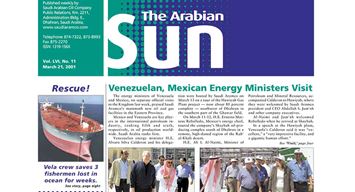This Day in History
This Day in History (1986) Retrospective Gulf storm study provides accurate design data

Global March 26, 2023
Data analysis gives valuable information to offshore project development.
From the March 26, 1986, edition of The Arabian Sun
It's no secret that storms and their potentially devastating force on offshore structures have long been a concern for the oil industry's design engineers, which is why the newly released "Gulf Hindcast Study" -- a study that provides some of the most accurate offshore storm design data available -- is already proving a valuable tool to Aramco engineers.
Developed under the auspices of the Process and Control Systems Department (P&CSD), the study provides meteorological and oceanographic criteria for almost any location within the Aramco operating area -- information that is the basis for the design of structures that must meet the environmental requirements for that particular point, according to Hassan Shabib, ocean engineer with P&CSD's Environmental Unit and coordinator of the study's monitoring program.
"Hindcasting," in this case, explains Shabib, is the determination of parameters of interest -- waves, currents, and water levels -- based on wind data collected in the past. Using the hindcast values of waves and currents from the past, the data is statistically analyzed and then extrapolated. The final results are future extreme values for storms likely to appear within one, 10, and 100 years.
By using a powerful computer and empirically correlating physical equations -- while taking into account topographical, bathymetric, and slope-bottom conditions unique to the operating area, a "customized" hydrodynamic computer model that accurately mirrors the Gulf terrain was developed.
"With the application of wind direction and speed data to the standard models, estimates for waves, currents, and water levels were calculated for thousands of actual points within the offshore fields from Safaniyah to the north to Ras Tanura to the South," says Shabib, who likens the effects of a driving wind force on the Gulf water to a person blowing hard at a cup filled with water.
"With most of our offshore structures installed in shallow water, we greatly benefited from conducting refraction analyses, as the Hindcast Study's extreme parameter values were significantly less than those expressed in prior studies and more representative," he added.
Caption for the top photo: Hassan Shabib of the Process and Control Systems Department examines a wave buoy, which measures wave characteristics of the Gulf, including motions, periods, and heights.
Also on this date
2016 — American novelist and poet Jim Harrison dies of a heart attack in Patagonia, Arizona at age 78
1991 — Argentina, Brazil, Uruguay, and Paraguay sign the Treaty of Asuncion, establishing Mercosur, the South Common Market
1982 — A groundbreaking ceremony for the Vietnam Veterans Memorial is held in Washington, D.C.
1975 — The Biological Weapons Convention comes into force
1967 — Ten thousand people gather for one of the many Central Park be-ins in New York
1958 — The U.S. Army launches Explorer 3
1954 — The 11 megaton Rome shot of Operation Castle is detonated at Bikini Atoll
1934 — The U.K. driving test is introduced
1931 — Swissair is founded as the national airline of Switzerland
1915 — The Vancouver Millionaires win the 1915 Stanley Cup Finals, the first championship played between the Pacific Coast Hockey Association and the National Hockey Association
1896 — An explosion at the Brunner Mine near Greymouth, New Zealand kills 65 coal miners in the country’s worst industrial accident
1812 — A political cartoon coins the term "gerrymander" to describe oddly shaped electoral districts designed to help incumbents win re-election
1636 — Utrecht University is founded in the Netherlands
1484 — William Caxton prints his translation of Aesop's Fables






